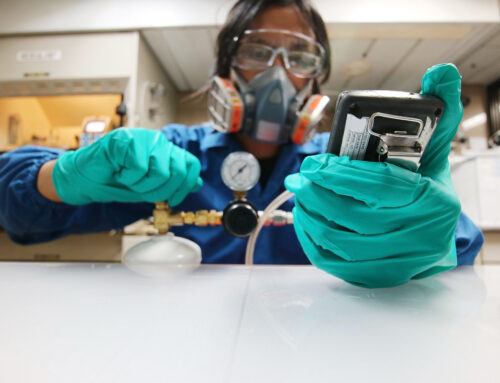The monitoring and detection of gas in the workplace saves many lives each year. Gas detectors ensure workplace safety by alerting workers to their exposure to dangerous and deadly gas, the presence of explosive gases, or the lack of oxygen in a specified area. There are two common types of gas detectors: fixed gas detectors and portable gas detectors.
What is Fixed Gas Detection?
Fixed gas detection systems are generally installed to give around the clock protection to specific areas and organizations. These detectors are designed to alert personnel of the possible danger of poisoning by deadly gas exposure, asphyxiation, or explosion.
Fixed gas detectors are used in all sizes of facilities. They are used equally to provide early warnings of dangerous gas buildup and control ventilation systems to maintain a safe facility environment. Customizable alarm point settings and relays mean that fixed gas detectors can be configured to alert occupants to hazards and control facility equipment. These settings allow occupants to respond rapidly to atmospheric hazards.
Importance of Fixed Gas Detectors
The fixed gas detection system is a very effective method to ensure people and properties’ highest safety level. The primary objective behind the fixed gas detectors installation is to continuously monitor and recognize any danger in the environment well before hazards turn into severe threats, which then shields lives and the atmosphere where workers are serving.
Advantages of Fixed Gas Detectors
• Fixed gas detectors give you automatic responses and alerts.
• You can set them to shut down a system when a gas leak reaches a particular alarm level.
• They can be used to activate ventilation or other equipment to keep hazardous gas levels below a threshold.
• They observe flammable and poisonous gas levels to maintain your personnel’s safety.
• Fixed gas detectors could be used in tandem along with other area detectors to sense hazardous leaks.
Disadvantages of Fixed Gas Detectors
• Fixed gas detectors are a bit more costly than portable detectors.
• They only sense gas that diffuses into it.
• Due to their partial coverage ability, a leaking gas moving in an uncovered area without warning is exceptionally high.
• They’re unreasonable for areas that are overcrowded or complicated to reach.
• Unlike a portable detector, fixed detectors need the main power supply to operate.
Other Considerations:
Each fixed gas detection system is different. A site investigation by a professional is highly recommended as there should be a consideration for the following;
• The gas hazard must be evaluated and specified appropriately. Every gas has different molecular weights and will act in diverse ways.
• The gas detection location should be assessed based on environmental conditions like humidity, temperature, airflow, or wind.
• Make sure to check the alarm twice before using it as it will be used as a “SAFE – NOT SAFE” signal.
• The crew must know the category and limitations of the detectors used.
• A proper inventory of span gas bottles and light sensors should be maintained.
Summary:
By utilizing relays and customizable alarm points in a fixed gas detection system, users can easily sense and respond to hazardous environmental conditions. This kind of automatic system alerts people in dangerous situations and saves lives!





